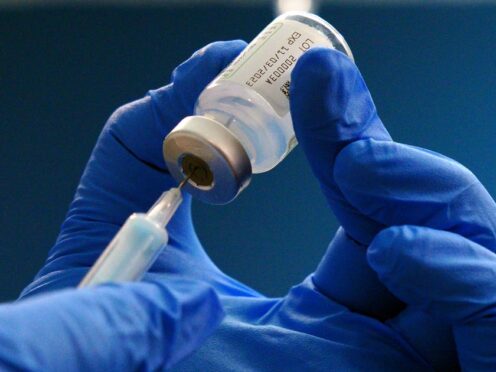
A proposed state-of-the-art research facility designed to prepare the UK for dangerous pathogens saw costs soar by 500% and was delayed by at least 15 years amid a “lack of transparency and accountability” by the Government department and agency in charge of its construction.
Land for the UK Health Security Agency’s (UKHSA) Health Security Campus was purchased for £30 million in 2017 as part of plans to relocate laboratories in Wiltshire and London which were nearing the end of their “operational life”.
But the House of Commons Public Affairs Committee said on Monday that “spiralling costs and a failure to deliver” had hampered the programme and recommended a thorough review be undertaken.
Estimated costs for the Harlow site in Essex have risen by more than 500% since 2015, from £530 million to more than £3 billion, the committee’s chairwoman wrote in a letter to the Department for Health and Social Care (DHSC).
We have published correspondence on our inquiry into UKHSA Health Security Campus.
Find out more 👉https://t.co/z60zk0iL8M pic.twitter.com/C7eGKAkTVm
— Public Accounts Committee (@CommonsPAC) May 27, 2024
The programme was initially estimated to be completed in 2021 but this date has now been pushed back to 2036 at the earliest.
A report by the National Audit Office in February found failings to establish the new site had “undermined” the UK’s future resilience to dangerous diseases.
Dame Meg Hillier, chairwoman of the committee, said: “There appears to have been no accountability for the programme’s estimated costs having risen by over 500% since 2015, the completion date being at best 15 years later than initially planned and other failures in the programme’s management.”
She added it was “not clear that UKHSA has the expertise” to complete the project and suggested that “consideration be given to setting up an entirely new delivery agency for this large, expensive, nationally important, departmental programme”.
Up to the end of the 2023-24 financial year, UKHSA and its predecessors had spent £406 million on the programme at Harlow, some £40 million of which could be recovered by recycling the building’s design alongside savings from the sale of the site, the committee said.
The letter – detailing six conclusions with attached recommendations – was sent to Shona Dunn, second permanent secretary at DHSC, and UKHSA chief executive Professor Dame Jenny Harries.

Criticisms of the programme’s management by UKHSA and DHSC included that they had not agreed the extent to which UKHSA would work with other government departments; that the location of the new public health laboratories was still unclear and that UKHSA did not have “a full grasp” on the costs of the options it had.
If the programme is terminated in Harlow – and is moved to Porton Down, Wiltshire, at a lower cost of £2 billion – at least £295 million of taxpayer money will be written off, the letter added.
The letter recommended UKHSA and DHSC “commit to providing greater transparency in their annual reports and accounts on how the programme is progressing”.
Dame Hillier said the revised 2036 completion date was “clearly at risk” because work on the programme has stopped and ministers have not yet decided where and when it will recommence.
The need to replace existing laboratories was first identified in 2006 by the Health Protection Agency (HPA), a predecessor to UKHSA.
The committee said high-containment public health laboratories like the one proposed in Harlow were “critical in ensuring the UK’s public health resilience”.
The sites can be used to study and identify dangerous and highly-infectious diseases, protecting the population from deadly viruses, bacteria and other microorganisms.

Enjoy the convenience of having The Sunday Post delivered as a digital ePaper straight to your smartphone, tablet or computer.
Subscribe for only £5.49 a month and enjoy all the benefits of the printed paper as a digital replica.
Subscribe